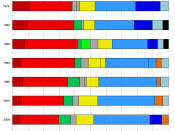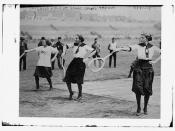Contents
1Contents �
2Introduction �
31. The nature and scope of competition law in sport �
31.1. The Bosman Case �
31.1.1. The principal aspects of the judgement �
41.1.2. The consequences of the Bosman ruling �
41.2. The interdependent nature of economic activity �
41.3. The strong growth in economic activities connected with sport �
51.4. The special character of sport �
61.5. Exemptions under competition law �
72. Broadcasting �
72.1. The narrow relevant market �
82.2. Exclusivity �
92.3. Joint selling and joint purchasing of broadcasting rights �
92.3.1. Joint selling �
92.3.1.1. Definition of joint selling �
92.3.1.2. Restriction of competition �
102.3.1.3. Create of efficiency �
102.3.2. Joint purchasing �
10Conclusion �
11Referencing �
11Books �
12Journals �
12Websites �
�
Introduction
One of the features of sport in general is that this is a pastime and a way of contributing to society. As is recognised by the Amsterdam Declaration, sport has an important social relevance as well as a role in forging identity and bringing people together.
Traditionally sport has its origins on the European continent (for example the Olympic movement). Also most of the important international sport organisations are based in Europe.
But for all these reasons and because sport has become more a business area in some ways, many questions about competition, organisation, participation or broadcasting have been raised.
The aim of this report is to show the answers brought to these issues which are linked to the globalisation and the development of sport.
The nature and scope of competition law in sport
The Bosman Case
In the Bosman� case, the European Court of Justice, in its judgment in 1995, liberalized transfer rules of footballers and, more importantly, confirmed the intrusion of Community rules into sport.
The principal aspects of the...


